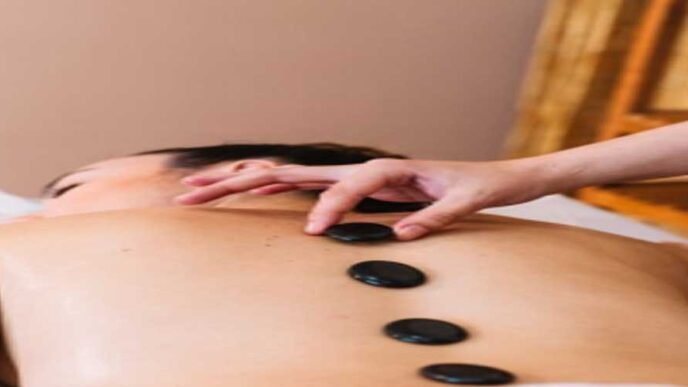Heel pain is a prevalent issue affecting individuals of all ages, often impacting daily activities and overall quality of life. Understanding the root causes is essential for undertaking effective treatment and prevention. This guide delves into the common causes of heel pain, providing insight into how to address and manage this discomfort effectively.
Plantar Fasciitis: The Leading Culprit
Plantar fasciitis stands out as one of the most common causes of heel pain, especially in Houston where active lifestyles are prevalent. This condition involves inflammation of the plantar fascia, a thick band of tissue running across the bottom of the foot, connecting the heel bone to the toes. Heel pain Houston residents experience due to plantar fasciitis is often most severe in the morning or after periods of inactivity.
Heel pain Houston sufferers frequently notice a stabbing sensation with their first steps each day, which tends to decrease with movement. Contributing factors include high-impact activities, obesity, and wearing shoes with inadequate support. Treatment typically involves rest, stretching exercises, and in some cases, custom orthotics.
Achilles Tendinitis: Strain On the Heel
Achilles tendinitis is a prevalent cause of heel pain, especially among athletes and active individuals. This condition arises from overuse and strain on the Achilles tendon, which connects the calf muscles to the heel bone. Symptoms typically include pain and stiffness along the tendon, which may intensify with activity or after long periods of inactivity.
Factors contributing to Achilles tendinitis include sudden increases in physical activity, tight calf muscles, and wearing improper footwear. The pain often starts as a mild ache but can progress to severe pain if not addressed promptly. Managing Achilles tendinitis involves a combination of rest, ice application, and stretching exercises to reduce inflammation and strengthen the tendon. In more severe cases, physical therapy or medical interventions may be necessary to prevent further damage and ensure a full recovery. Proper treatment and prevention strategies are crucial for those affected by this condition.
Heel Spurs: Bone Growth Complications
Heel spurs are bony growths that develop on the underside of the heel bone, often associated with plantar fasciitis. These spurs form due to long-term strain on the muscles and ligaments of the foot, leading to calcium deposits that accumulate on the heel bone. While heel spurs themselves might not always cause pain, their presence can exacerbate existing conditions like plantar fasciitis, resulting in significant discomfort.
Individuals suffering from heel spurs may experience sharp, stabbing pain when standing up in the morning, which can diminish as the foot warms up and becomes more flexible. The pain typically originates where the spur attaches to the heel bone and can extend into the arch of the foot. Contributing factors to the development of heel spurs include high-impact activities, obesity, and wearing improperly fitted footwear that does not support the arch of the foot.
Treatment for heel spurs focuses on alleviating inflammation and reducing pressure on the affected area. This can be achieved through a combination of rest, ice application, anti-inflammatory medications, and physical therapy. Orthotic devices or custom-made shoe inserts can also help by providing adequate support and cushioning. In severe cases, surgical intervention may be considered to remove the spur and relieve persistent pain.
Stress Fractures: Tiny Cracks, Big Pain
Stress fractures, tiny cracks in the heel bone, can be a significant source of heel pain, particularly in individuals who engage in high-impact activities such as running or jumping. These fractures result from repetitive force or overuse, which overwhelms the bones ability to repair itself.
Symptoms of a stress fracture include sharp, localized pain that worsens with activity and subsides with rest. Unlike other causes of heel pain, stress fractures necessitate a period of complete rest from weight-bearing activities to allow the bone to heal. Additionally, addressing underlying issues such as improper footwear and inadequate training techniques is crucial to prevent recurrence.
For more information on how to prevent and treat stress fractures, check out this comprehensive guide on foot health.
Bursitis: Inflammation Of The Heel’s Cushions
Bursitis, the inflammation of the bursa (small, fluid-filled sacs that cushion the bones, tendons, and muscles near the joints), can also lead to heel pain. The bursa in the heel, known as the retrocalcaneal bursa, can become irritated from repetitive motions or pressure, causing swelling and pain.
Common activities that contribute to bursitis include running, jumping, or wearing shoes that press against the back of the heel. Symptoms are often characterized by swelling, redness, and tenderness in the affected area. Treatment involves rest, ice, anti-inflammatory medications, and sometimes corticosteroid injections to reduce inflammation and alleviate pain.
Conclusion
Heel pain can significantly affect one’s quality of life, making it essential to understand the underlying causes and appropriate treatments. From plantar fasciitis to bursitis, recognizing the symptoms and risk factors associated with each condition is the first step towards effective management and prevention. By addressing these issues through proper footwear, rest, and medical intervention when necessary, individuals can alleviate pain and maintain an active, healthy lifestyle. One can also opt for the best shoes for heel pain. These shoes are specially designed to provide superior support and comfort, making them an excellent choice for those needing specialized orthopedic footwear. These shoes help reduce pressure on sensitive areas, enhance stability, and promote better foot alignment, contributing to overall well-being and mobility.












